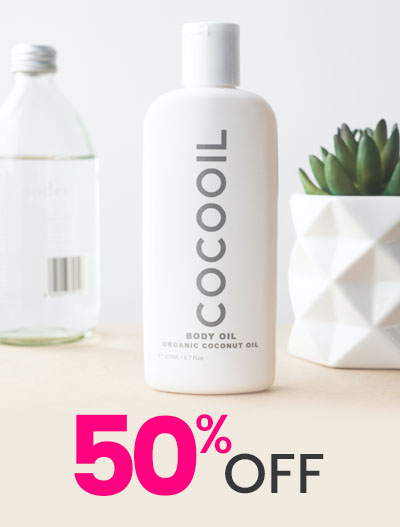Conquering Menstrual Cramps: 9 Effective Remedies for You
Menstrual cramps, also known as dysmenorrhea, are a common discomfort experienced by many women during their menstrual cycle. These cramps can range from mild to severe and can significantly impact daily activities.
This blog post will explore nine effective remedies for menstrual cramps, offering relief and a better quality of life.
Menstrual Cramps
Menstrual cramps typically occur just before and during the first few days of a menstrual period. They result from the contraction of the uterus, which helps shed its lining. Prostaglandins, hormone-like substances involved in pain and inflammation, trigger these contractions. Higher levels of prostaglandins are associated with more severe menstrual cramps.
1. Heat Therapy
Applying heat to the lower abdomen is one of the most effective and easily accessible remedies for menstrual cramps. The warmth helps relax the uterus’s muscles, increase blood flow, and reduce pain.
How to use:
- Heating Pad or Hot Water Bottle: Place it on the lower abdomen for 15-20 minutes at a time, repeating as needed throughout the day. Ensure the temperature is comfortable to avoid burns.
- Warm Bath: Soaking in a warm bath for at least 15 minutes can relax the whole body and alleviate cramping. Adding a few drops of essential oils like lavender or eucalyptus can enhance the relaxing effect.
Benefits:
- Immediate relief from pain.
- Non-invasive and easy to use.
- No side effects compared to medications.
2. Over-the-Counter Pain Relievers
Nonsteroidal anti-inflammatory drugs (NSAIDs) such as ibuprofen (Advil, Motrin) and naproxen (Aleve) are commonly used to alleviate menstrual pain. These medications reduce the production of prostaglandins, thereby reducing inflammation and pain.
Dosage and caution:
- Follow the dosage instructions on the packaging.
- For best results, take the medication at the onset of cramps or even before they start if your cycle is regular.
- Take with food to avoid stomach upset.
- Consult a healthcare provider if you have any underlying health conditions, are pregnant, or are taking other medications.
Benefits:
- Effective in reducing pain and inflammation.
- Readily available without a prescription.
3. Exercise
Engaging in regular physical activity can help reduce menstrual cramps. Exercise increases blood flow and releases endorphins, which are natural painkillers. It also helps reduce stress, which can exacerbate cramps.
Types of exercises:
- Yoga: Gentle yoga poses such as Child’s Pose, Cat-Cow, and Cobra can stretch and relax the lower back and abdomen muscles.
- Stretching: Focus on stretching exercises that target the lower back and abdominal muscles.
- Light Cardio: Walking, swimming, or cycling for at least 30 minutes most days of the week can help maintain overall health and reduce menstrual discomfort.
Benefits:
- Long-term improvement in menstrual health.
- It enhances mood and reduces stress.
- Improves overall physical fitness.
4. Dietary Changes
Your diet can significantly impact menstrual cramps. Certain foods can help reduce inflammation and bloating, while others can exacerbate symptoms.
Recommendations:
- Foods to Include:
- Omega-3 Fatty Acids: Found in fish (like salmon and mackerel), walnuts, and flaxseeds. Omega-3s have anti-inflammatory properties.
- Leafy Greens: Spinach, kale, and other leafy greens are rich in magnesium, which can help relax muscles.
- Fruits and Vegetables: High in fibre and water content, which can help reduce bloating.
- Whole Grains: Provide a steady release of energy and help maintain blood sugar levels.
- Foods to Avoid:
- Caffeine: Can cause dehydration and increase cramping.
- Salty Foods: This can lead to water retention and bloating.
- Processed Foods: Often high in sodium and unhealthy fats, exacerbating symptoms.
Benefits:
- Reduces inflammation and bloating.
- Provides essential nutrients that support overall health.
- It can improve energy levels and mood.
5. Hydration
Staying well-hydrated helps to reduce bloating and alleviate menstrual cramps. Dehydration can lead to muscle cramping and discomfort.
Tips:
- Aim to drink at least 8-10 glasses of water a day.
- Include herbal teas and water-rich fruits and vegetables in your diet.
- Avoid diuretics like alcohol and caffeine, which can lead to dehydration.
Benefits:
- It helps prevent bloating and water retention.
- Maintains overall hydration and health.
- It can improve skin health and digestion.
6. Herbal Teas
Certain herbal teas have natural properties that can help soothe menstrual cramps. Chamomile, ginger, and peppermint teas are particularly effective.
Preparation and use:
- Chamomile Tea: Steep one teaspoon of dried chamomile flowers in a cup of boiling water for 10 minutes. Drink 2-3 cups a day. Chamomile has anti-inflammatory and antispasmodic properties that can help relax the uterus.
- Ginger Tea: Slice fresh ginger and boil it in water for 10 minutes. Strain and drink up to three times a day. Ginger can reduce inflammation and pain.
- Peppermint Tea: Steep fresh or dried peppermint leaves in boiling water for 10 minutes. Drink as needed. Peppermint has muscle-relaxing properties.
Benefits:
- Natural and gentle on the body.
- Provides additional hydration.
- It can have calming and soothing effects.
7. Magnesium Supplements
Magnesium helps to relax muscles and can reduce the severity of menstrual cramps. It is available in supplement form and is also found in many foods.
Dosage:
- The recommended daily intake for magnesium is around 320 mg for women.
- Food Sources: Eat leafy greens, nuts, seeds, whole grains, and dark chocolate.
Benefits:
- Supports muscle function and relaxation.
- It can improve sleep quality and reduce stress.
- It may also help with other menstrual symptoms like mood swings and headaches.
8. Acupuncture and Acupressure
Traditional Chinese medicine techniques like acupuncture and acupressure can be highly effective in relieving menstrual cramps. These methods involve stimulating specific points in the body to alleviate pain.
How it works:
- Acupuncture: Involves the insertion of thin needles into specific points on the body. A licensed practitioner should perform it. Acupuncture can help balance the body’s energy flow and reduce pain.
- Acupressure: Uses manual pressure on certain points, such as the space between the thumb and index finger (LI4) or the point below the navel (CV6). These points can help relieve pain and improve circulation.
Benefits:
- Non-invasive and drug-free.
- It can provide relief from various types of pain.
- It may improve overall well-being and balance.
9. Stress Management Techniques
Stress can exacerbate menstrual cramps, so managing stress is crucial. Techniques like deep breathing exercises, meditation, and mindfulness can help reduce stress levels and improve overall well-being.
Methods:
- Deep Breathing Exercises: Practice deep breathing for 5-10 minutes, focusing on slow, deep breaths to relax the body and mind. This can help reduce tension and pain.
- Meditation: Spend a few minutes daily meditating to reduce stress and promote relaxation. Guided meditations or mindfulness apps can be helpful.
- Mindfulness: Engage in mindfulness practices, such as mindful walking or mindful eating, to stay present and calm. This can help shift focus away from pain and discomfort.
Benefits:
- Reduces stress and anxiety.
- Improves mental clarity and emotional balance.
- It can enhance the overall quality of life.
Personal Stories and Testimonials
Hearing from others who have successfully managed their menstrual cramps can be inspiring and provide practical insights. Here are a few testimonials from women who have found relief using these remedies:
Jane, 28: “I used to dread my period every month because of the intense cramps. After incorporating yoga and dietary changes into my routine, I’ve noticed a significant reduction in pain. Yoga helps me relax, and eating more leafy greens and omega-3s has made a big difference.”
Sarah, 35: “Heat therapy is my go-to remedy for menstrual cramps. I keep a heating pad at work and at home, and it provides immediate relief. Combining it with herbal teas like chamomile has also helped me stay calm and comfortable.”
Emily, 22: “Taking magnesium supplements has been a game-changer for me. I used to have severe cramps that disrupted my daily activities, but since I started taking magnesium and staying hydrated, the pain is much more manageable.”
Anna, 31: “Acupuncture has been incredibly effective for my menstrual cramps. I was sceptical at first, but after a few sessions, I noticed a significant reduction in pain. It’s a relaxing and holistic approach that has improved my overall well-being.”
Final Thoughts
By incorporating these nine remedies into your routine, you can find relief from menstrual cramps and improve your quality of life. Listening to your body and finding what works best for you is essential. If your cramps are severe or persist despite trying these remedies, it’s essential to consult with a healthcare provider for further evaluation and treatment.
Implementing these strategies can help you take control of your menstrual health and reduce the impact of cramps on your daily life. From heat therapy to stress management, each remedy offers a unique approach to tackling menstrual pain. Try them out and discover the combination that brings you the most relief.
Additionally, consider keeping a menstrual diary to track your symptoms and the effectiveness of different remedies. This can help you identify patterns and effectively tailor your approach to managing menstrual cramps.










